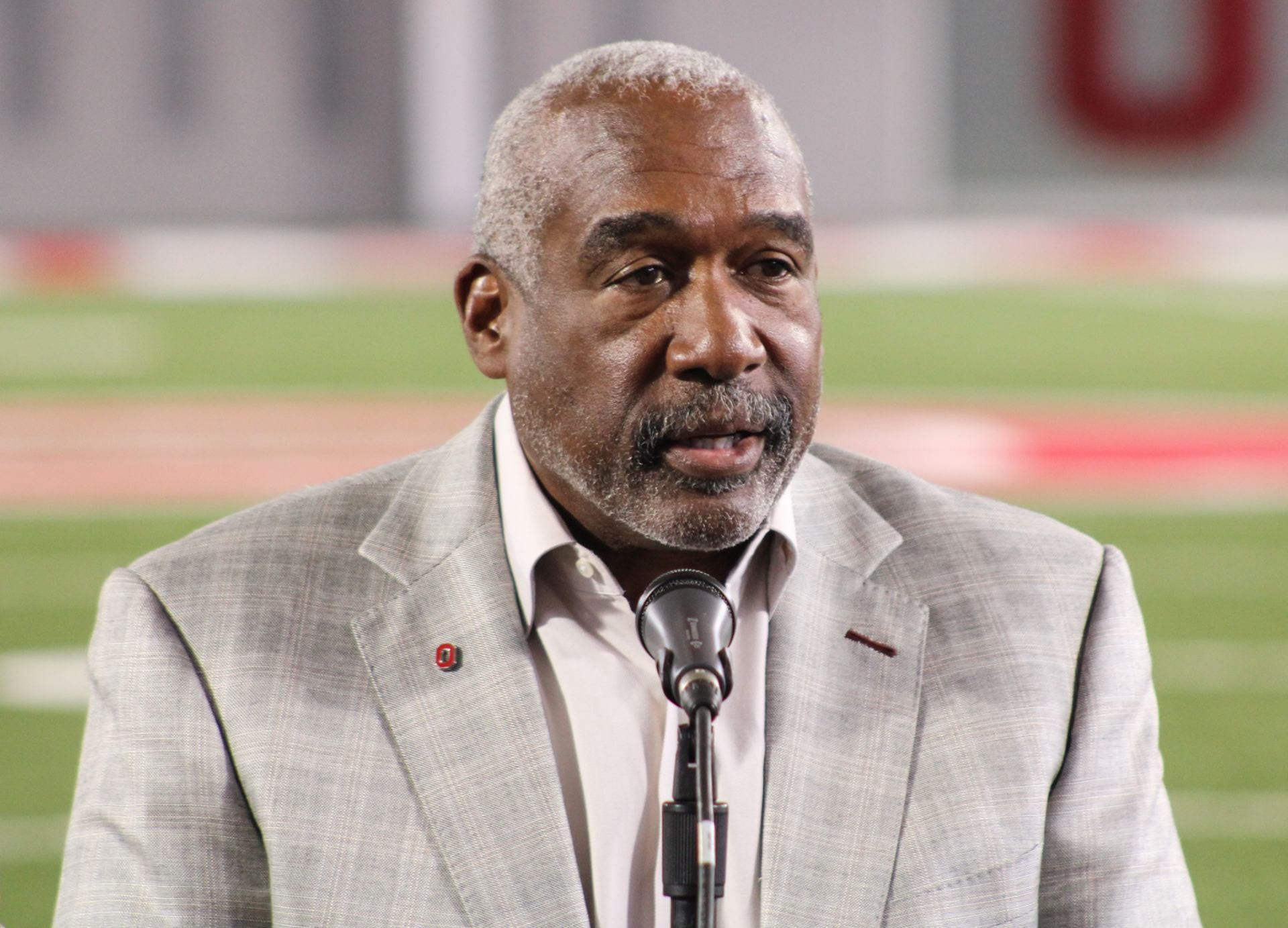
Ohio State athletic director Gene Smith speaks with the media at the Woody Hayes Athletic Center Thursday. Credit: Casey Smith | Lantern TV Sports Producer
The Big Ten Conference made a historical and impactful move by allowing the University of California, Los Angeles and University of Southern California to expand and join the league beginning Aug. 2, 2024.
Thursday, the Big Ten took another step and announced a new distribution agreement with CBS, FOX and NBC, putting an emphasis on being a “coast-to-coast” conference by reaching an even broader audience.
Athletic director Gene Smith said Thursday that having “powerhouses” like their new media partners is a chance to “dip our toe a little bit stronger” into different platforms.
“A great opportunity for all of our athletes in the Big Ten Conference, including UCLA and USC when they transition in in ’24,” Smith said. “Unbelievable exposure for our institutions and the student-athletes we serve, so really excited about a new diversity and in our platforms.”
On Ohio State’s football roster, three players are listed with hometowns in California: third-years quarterback C.J. Stroud and safety Kourt Williams II as well as first-year defensive lineman Hero Kanu, who is originally from Germany.
The prospect of the Buckeyes football and additional 35 varsity sports playing in the Rose Bowl or on the West Coast during the regular season will become a reality.
Stroud said he didn’t want to play in the Pac-12 on the West Coast, which opened him to the idea of playing outside of his home state and eventually Ohio State during his recruiting process. He said California natives such as former teammates wide receiver Chris Olave and offensive lineman Wyatt Davis made Ohio State “inviting,” and he thinks the new media deal will do similarly for younger California student-athletes.
“In high school, I definitely wanted to get out the west, and there wasn’t nothing wrong with the schools out there. I just wanted to play against other competition and try to just make it as hard as possible for myself,” Stroud said. “I definitely think that now that they’re kind of combining with coast to coast, whatever the case may be, it’s definitely promising for the West Coast kids just to be able to go to other coasts and play and see how those guys are.”
On the other side of the United States, Kyle McCord grew up in Mt. Laurel, New Jersey, before completing his high school career at St. Joseph’s Prep in Pennsylvania. The second-year quarterback said the draw of the Big Ten and Ohio State, the latter of which he described as college football’s “end-all, be-all,” played a role in his own recruitment when considering other conferences.
“You look on both sides, [the Big Ten’s] got loaded teams, really, on the east and the west. You know if you come here, you’re going to see the best of the best,” McCord said. “I think everybody likes to talk about the SEC, but I think the Big Ten is right there as well.”
In its previous media deals, ABC and ESPN were part of agreements to broadcast Big Ten sporting events. No longer media partners in the new deal announced Thursday, Smith said “we’re going to miss” the two networks.
But looking ahead, Smith said the opportunity to reach an audience across the U.S. through its new agreement will produce “a high level of excitement.”
“All the intellectual property that exists within those organizations are going to come to bear to make sure we engage the fans,” Smith said. “I don’t know exactly how it’s going to happen, but I do know that out of the chute, they’re going to be jacked up and they’re going to be brainstorming on ways to make sure that we continue to engage the fans.”


